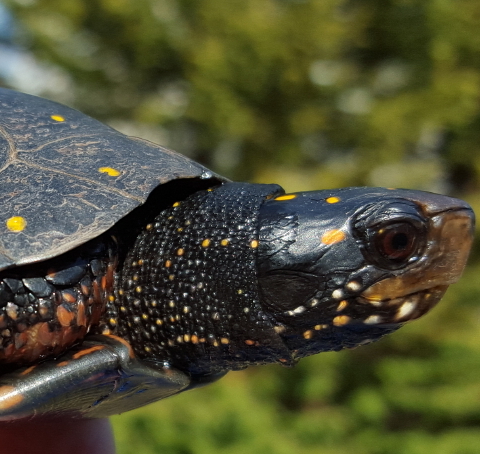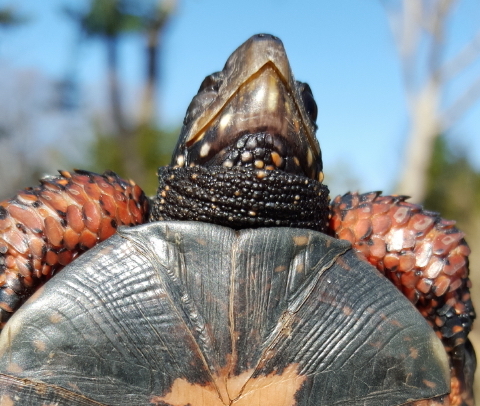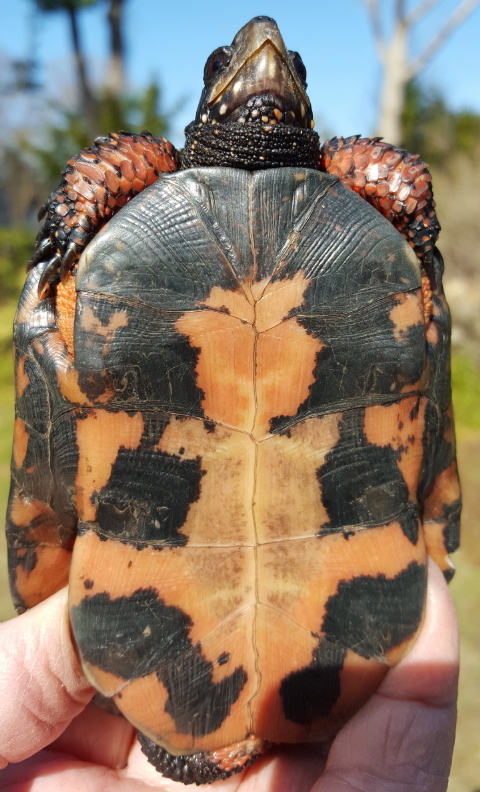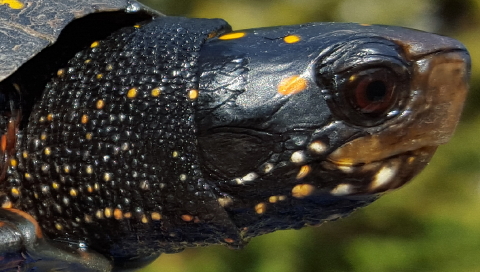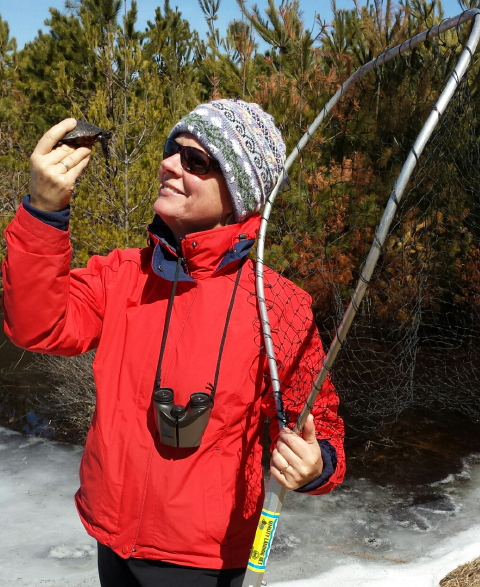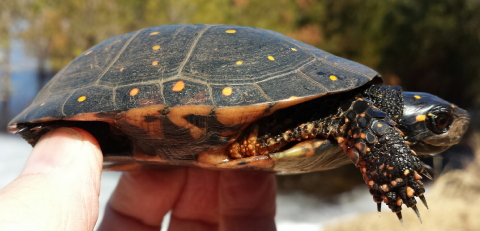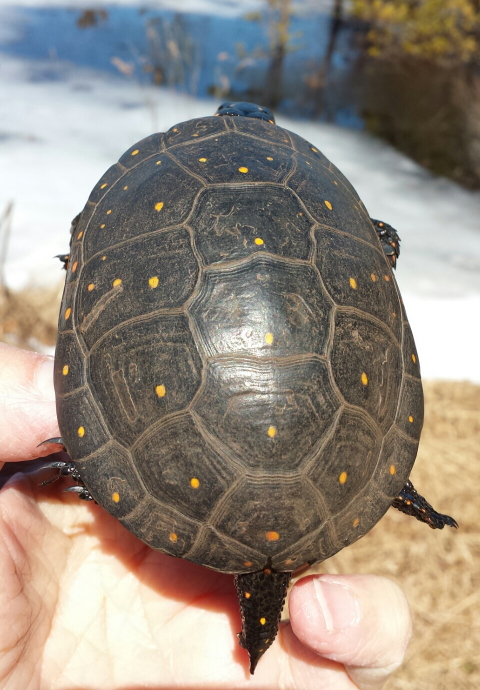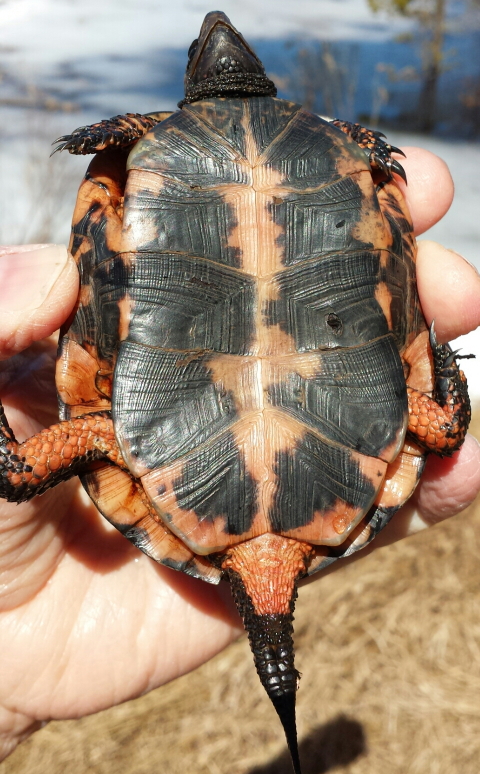Male Spotted Turtle #156 Possibly in Gender TransitionÂ
As reported earlier this week (see Possible Gender Changes in Adult Spotted Turtles on SouthCoast of Massachusetts), we detected possible gender changes in two adult spotted turtles, #206 and #207, first observed in April 2014 with female chin and neck pigmentation and then documented in April 2015 with male pigmentation and other male gender characteristics. Â Yesterday, April 16th, we captured a new spotted turtle (#157) at the same bog. Â This turtle, that we have identified as male, presented with possible transitional pigmentation of the chin and neck.
Male Spotted Turtle #156 with Possible Transitional Pigmentation
Spotted turtles feature gender dichromatism with females showing a brightly (orange) colored chin and neck and males sporting dark, drab chins and necks. Â Spotted Turtle #156 appears to be in transition. Â The chin is not bright orange and has not yet become drab black. Â The neck sports some “bumps” that still hold an orange pigmentation, but is dominated by darker color.
Spotted Turtle #157 with Slight Abdominal Cavity
We assessed Spotted Turtle #157 at 11+ years old based on annual growth lines and size. Â The turtle measured 10.22 centimeters straight-line carapace length, 7.84 centimeters maximum width, and 8.65 centimeters plastron length. Â The weight was 144 grams. Â With an abdominal cavity and the location of the anal vent, we identified #157 as a male.
Close Up of Spotted Turtle #157
Although it seems to us to be a turtle in transition, we have no history for this individual since 16 April 2015 marked its first capture. Â Now that we have documented its appearance, we look forward to compare future observations of chin and neck pigmentation.
